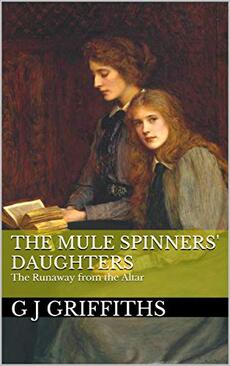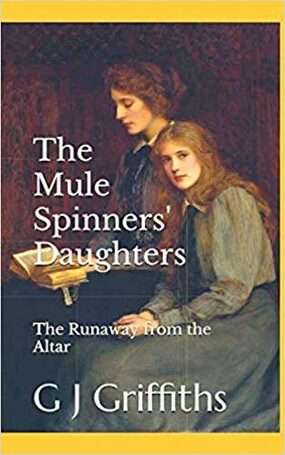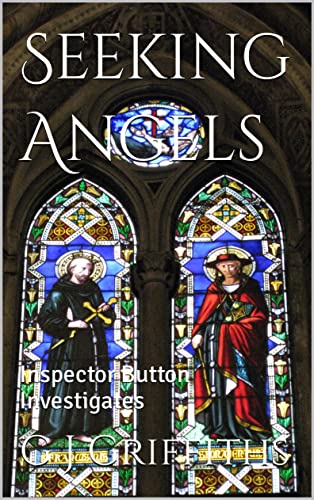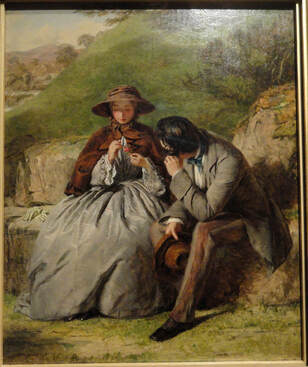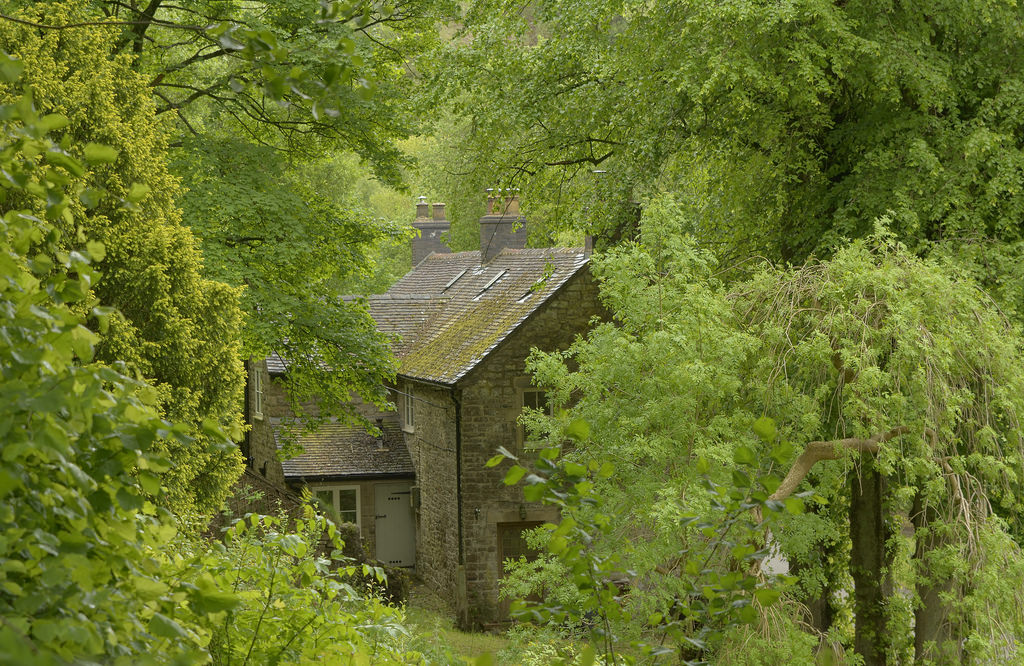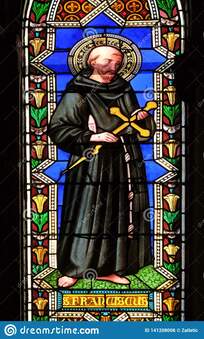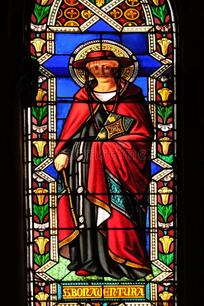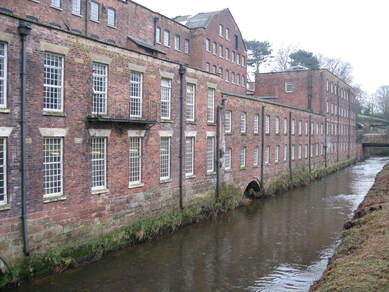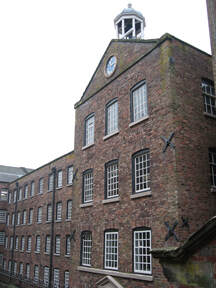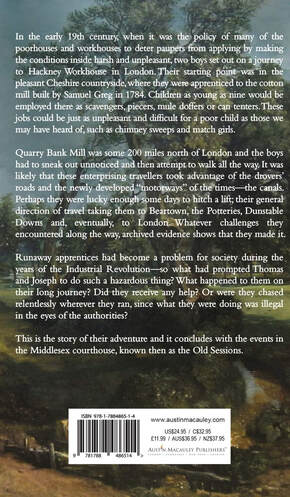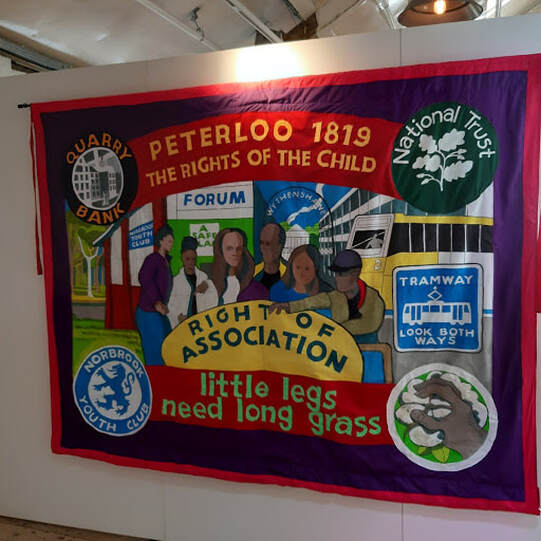THE MULE SPINNERS' DAUGHTERS
MULES; MASTERS & MUD and
*THE QUARRY BANK RUNAWAYS *
SEEKING ANGELS: Inspector Button Investigates
WARNING! These books may contain NUTS! (Non-Uniform Text Speech)
Kindle edition now $0.99 or £0.80
In other words speech in what some have called "Olde English Vernacular". It is spoken by characters in the book from the North, the Midlands and the South of England. There is a glossary at the end of the book to help if you can rise to the challenge. It adds shades of colour to these 19th century stories that you may not be expecting.
MULES; MASTERS & MUD and
*THE QUARRY BANK RUNAWAYS *
SEEKING ANGELS: Inspector Button Investigates
WARNING! These books may contain NUTS! (Non-Uniform Text Speech)
Kindle edition now $0.99 or £0.80
In other words speech in what some have called "Olde English Vernacular". It is spoken by characters in the book from the North, the Midlands and the South of England. There is a glossary at the end of the book to help if you can rise to the challenge. It adds shades of colour to these 19th century stories that you may not be expecting.
THE MULE SPINNERS' DAUGHTERS: CLICK HERE FOR THE ARTISAN BOOK REVIEW
and below for Edward Rickford's review:
CLICK HERE TO CHECK OUT THIS LATEST REVIEW
and below for Edward Rickford's review:
CLICK HERE TO CHECK OUT THIS LATEST REVIEW
|
Book Reviews Blog ON THIS PAGE: The Historical Novels about the Quarry Bank Apprentices and their life stories.
Graham J Griffiths FB |
The Mule Spinners' Daughters: Book 3 in Quarry Bank Mill series
|
|
THE MULE SPINNERS' DAUGHTERS:
“… Sebastian: But there is an obstacle, a principle of hers that she’s read of in a book by a woman called Mary Wollstonecraft...” “… Women should be wives and companions to their husbands…”Did the mother of Mary Shelley fill the farm girl’s head with too many ideas of feminism? When Sally Sefton runs away from Sebastian at the altar on her wedding day there is a desperate chase to find her. Some of her friends think they know why she ran. But only Cathy Priestley thinks she knows where. Her chief bridesmaid suspects Sally may have joined the Christian Israelites. Will they find her before the group sails on a missionary tour abroad? The split causes a bitter dispute between Sebastian and Wesley, her brother. While feelings are running so high there seems to be no hope of reconciliation between the families. Click on the book cover to order from Amazon UK Click here to order from Amazon USA |
|
Detective Inspector Button of the Mule Spinners' Daughters novel re-appears in another book shown here. The stained glass images of Saint Francis of Assisi and Saint Bonaventure were used for the front cover. The story's first and final chapters involve a burglary in a local church, but that's the only clue you're getting!
Click on the RH pictures to go to Amazon US or UK for more info' on the book. Thanks. Mike Gibson sent me a copy of his Seeking Angels review: I’d just like to say the following: This book is an interesting and entertaining read. Set in Manchester in Victorian times, it makes many references to local places and to real life historical events, particularly the Chartist riots, which, together with comment on social and political concerns, add to the interest and provide an insight into what life was like in those times. Hope that helps. Kind regards and all the best with the book, Mike |
A GREAT REVIEW FROM ARTISAN BOOK REVIEWS: The Mule Spinners’ Daughters by G J Griffiths
The Mule Spinners' Daughters: The Runaway from the Altar by G J Griffiths is a memorable, touching and captivating historical, family saga and romance novel. It is the third book in G J Griffiths extraordinary “Tales of Quarry Bank Mill” series and follows the lives of Sally and Catherine, and the various family crises that threaten to consume their fragile existence.
Sally comes from a farming family and loves her life, until she is smitten by Sebastian who might have an ulterior motive for marriage, and who is ruled by the demon drink. Cathy finds herself attracted to James, a fellow teacher, but is reluctant to admit to her feelings. Add to this a desertion at the altar, a family member wrongly accused of theft, a runaway, and a self-proclaimed Messiah, and you have a novel that will have you totally engrossed.
The author, G J Griffiths, has woven a remarkable tale that transports the reader to an era where family values are paramount, where respect for one another is priority, where there will never be enough money, but where everyone is grateful for what they have. In addition, faith is foremost and whilst the characters strive for survival there is always a willingness and desire to be God-fearing and virtuous.
At the time of reading I had not read the two previous books, but this did not detract from the story which can definitely be read as a standalone, such is the strength of the characterizations. The expressive writing is strong while the character and plot development is enough to keep the reader turning the pages of this gentle yet compelling family saga. Well done to the author for causing this reader to want to travel to the north of England and seek out these characters and their families. The ‘voice’ of the times is perfect, as are the accents and idiosyncrasies of the family members. You will experience sadness, joy, astonishment, anger, and a myriad of emotions as you read through this enjoyable novel.
Once you have read The Mule Spinners’ Daughters you will undoubtedly want to hurry to read the previous books in the “Tales of Quarry Bank Mill” series and learn more of the history of these exceptional characters. Artisan Book Reviews highly recommends The Mule Spinners' Daughters: The Runaway from the Altar by G J Griffiths - an engaging, meaningful and unforgettable novel.
The Mule Spinners’ Daughters by G J Griffiths
The Mule Spinners' Daughters: The Runaway from the Altar by G J Griffiths is a memorable, touching and captivating historical, family saga and romance novel. It is the third book in G J Griffiths extraordinary “Tales of Quarry Bank Mill” series and follows the lives of Sally and Catherine, and the various family crises that threaten to consume their fragile existence.
Sally comes from a farming family and loves her life, until she is smitten by Sebastian who might have an ulterior motive for marriage, and who is ruled by the demon drink. Cathy finds herself attracted to James, a fellow teacher, but is reluctant to admit to her feelings. Add to this a desertion at the altar, a family member wrongly accused of theft, a runaway, and a self-proclaimed Messiah, and you have a novel that will have you totally engrossed.
The author, G J Griffiths, has woven a remarkable tale that transports the reader to an era where family values are paramount, where respect for one another is priority, where there will never be enough money, but where everyone is grateful for what they have. In addition, faith is foremost and whilst the characters strive for survival there is always a willingness and desire to be God-fearing and virtuous.
At the time of reading I had not read the two previous books, but this did not detract from the story which can definitely be read as a standalone, such is the strength of the characterizations. The expressive writing is strong while the character and plot development is enough to keep the reader turning the pages of this gentle yet compelling family saga. Well done to the author for causing this reader to want to travel to the north of England and seek out these characters and their families. The ‘voice’ of the times is perfect, as are the accents and idiosyncrasies of the family members. You will experience sadness, joy, astonishment, anger, and a myriad of emotions as you read through this enjoyable novel.
Once you have read The Mule Spinners’ Daughters you will undoubtedly want to hurry to read the previous books in the “Tales of Quarry Bank Mill” series and learn more of the history of these exceptional characters. Artisan Book Reviews highly recommends The Mule Spinners' Daughters: The Runaway from the Altar by G J Griffiths - an engaging, meaningful and unforgettable novel.
The Mule Spinners’ Daughters by G J Griffiths
|
|
The Quarry Bank Runaways is now available in a new Hardback edition -Amazon UK
and Amazon USA ***PLEASE NOTE: THE QUARRY BANK RUNAWAYS ebook is now almost HALF PRICE at only £1.77 When you purchase a copy of The Quarry Bank Runaways complete the details on a Contact Form (below) and receive a FREE ebook of the next one in the series to your email address. |
THE QUARRY BANK RUNAWAYS
In the early 19th century, when it was the policy of many of the poorhouses and workhouses to deter paupers from applying by making the conditions inside harsh and unpleasant, two boys set out on a journey to Hackney Workhouse in London. Their starting point was in the pleasant Cheshire countryside, where they were apprenticed to the cotton mill built by Samuel Greg in 1784. Children as young as 9 would be employed there, as scavengers, piecers, mule doffers or can tenters. These jobs could be just as unpleasant and difficult for a poor child as those we may have heard of, such as chimney sweeps and match girls.
Quarry Bank Mill was some 200 miles north of London and the boys had to sneak out unnoticed and then attempt to walk all the way. It was likely that these enterprising travellers took advantage of the drovers’ roads and the newly developed “motorways” of the times – the canals. Perhaps they were lucky enough some days to hitch a lift; their general direction of travel taking them to Beartown, the Potteries, Dunstable Downs and eventually to London. Whatever challenges they encountered along the way archive evidence shows that they made it.
Runaway apprentices had become a problem for society during the years of the Industrial Revolution – so what had prompted Thomas and Joseph to do such a hazardous thing? What happened to them on their long journey? Did they receive any help? Or were they chased relentlessly wherever they ran, since what they were doing was illegal in the eyes of the authorities?
This is the story of their adventure and it concludes with the events in the Middlesex courthouse, known then as the Old Session
TOP 5 STAR AMAZON REVIEWS OF THE QUARRY BANK RUNAWAYS
5.0 out of 5 stars Dickens-esque
By Brian Michaud on 24 May 2017
Format: Paperback
I took a break from reading David Copperfield to delve into The Quarry Bank Runaways. What I discovered was an author with a flair to not only write a historical fiction but also to write historically. Some authors write historical fiction by basically writing a modern novel with a historical background (like a cheaply painted backdrop at a play), but The Quarry Bank Runaways reads like a book from the 1800s. The writing style, descriptions of events, and use of language put the reader firmly in the time period.
I loved the various accents that the characters had as Joseph and Thomas traveled from the north of England (near Manchester) to London. The descriptions of people and places were not overly wordy, yet I was able to picture myself right there alongside the boys as they met both friendly and hostile people and environments along the way. Griffiths uses some of the same devices as Dickens in weaving his tale, such as delving into the backgrounds of minor characters, but Griffiths delivers them in such a way as to instantly give the reader a feel for the characters. What I liked about this was that Joseph and Thomas didn’t just meet a bunch of cardboard characters along the road; you instantly feared, despised, or empathized with them.
This book was not only entertaining but also an education. I was acquainted with the conditions of the workhouses of 19th century England; however, I was not aware of the situations in which children could be sent away and indentured to a mill owner against their or their parents will. My heart went out to the Joseph and Thomas as they walked almost 200 miles just to see their mothers.
I highly recommend this book to those who love historical fiction, fans of 19th century literature, and history buffs of all kinds.
5.0 out of 5 stars An insightful read
By Mrs Bernadette Reid on 18 August 2017
Format: Kindle Edition Verified Purchase
The Quarry Bank Runaways; The journey to London of Thomas Priestly and Joseph Sefton in 1806.
GJ.Griffiths
Publisher GJG (April 2017)
This is my first Saturday off since March and I ‘m spending part of it reviewing a book I have just read on my kindle. That’s how much I enjoyed the book I ve just finished. It’s a short read. It took me 3 hours and I read most of it yesterday in the inspirational setting of the top garden at Quarry Bank Mill. I want to recommend this to you all. It’s a work of historical fiction but well supported by the known facts provided by the boys themselves before the Middlesex assizes. It tells an imagined journey they led from Cheshire to London and the characters they meet along the way. It suggests how they supported themselves, where they may have slept and how they travelled. One of the most charming elements of the book is the dialect that the author has used at great lengths to explain the story. In the reviews I read on Amazon the readers criticised the use of dialect but for me it was essential in emphasising the terms and what they meant. I had no difficulty recognising some of the terms from my own community and that of my parents and grandparents. In both northern and southern twang author cleverly draws out the plot. It gives insight into the historical times they led and creates background relating to the fear of the French invasion, the war with France and its consequences. It touches on the precursors to Luddites, social reform and the establishment of the factory acts. (It was a bit of a stretch to imagine the boys actually met Robert Peel though.) It contrasts the economic gap between rich and poor. Religious persecution is explained and it is faithful to what we know about the Greg family and life as we understand it at Quarry Bank Mill during the early part of the 19th Century.
I did find the boy’s plight amusing in part (though I’m sure this wasn’t the intention of the author) and identified with the lads drawing parallels with my own youth growing up in a mill town as I did. One thing that strikes me is the kindness shown to them by strangers and the author contrasts this with the officiousness of those in the employ of the Greg’s and the ruling class. The thread running through this book is the indomitability of the human spirit where family love is concerned and the book is touching and heart rending especially since you know it’s based on a true story.
I don t like to write a review without making at least one criticism and I thought I had found a term which was anachronistic. I thought the use of constable would be related to the establishment of the first police force but when I looked it up the people of the internet informed me the term has been in use since the 13th Century. You do have to keep reminding yourself this is a work of fiction but it is very believable and created a new empathy for the runaways and a better understanding of the issues.
If you download this book for the kindle it is only 99p a saving of £7.00 and it’s the best 0.99p I ve spent in ages. With acknowledgements to our own archive team. If you ve got a few spare hours read it, and you could do worse than do so with a latte, over-looking the magnificent Quarry Bank Mill in one direction and the Apprentice house in the other as seen from the top garden.
To quote Hilary Mantel. “Life is a live show. You can’t relive it except through art.” GJ.Griffiths has brought this story back to life through word play.
In the early 19th century, when it was the policy of many of the poorhouses and workhouses to deter paupers from applying by making the conditions inside harsh and unpleasant, two boys set out on a journey to Hackney Workhouse in London. Their starting point was in the pleasant Cheshire countryside, where they were apprenticed to the cotton mill built by Samuel Greg in 1784. Children as young as 9 would be employed there, as scavengers, piecers, mule doffers or can tenters. These jobs could be just as unpleasant and difficult for a poor child as those we may have heard of, such as chimney sweeps and match girls.
Quarry Bank Mill was some 200 miles north of London and the boys had to sneak out unnoticed and then attempt to walk all the way. It was likely that these enterprising travellers took advantage of the drovers’ roads and the newly developed “motorways” of the times – the canals. Perhaps they were lucky enough some days to hitch a lift; their general direction of travel taking them to Beartown, the Potteries, Dunstable Downs and eventually to London. Whatever challenges they encountered along the way archive evidence shows that they made it.
Runaway apprentices had become a problem for society during the years of the Industrial Revolution – so what had prompted Thomas and Joseph to do such a hazardous thing? What happened to them on their long journey? Did they receive any help? Or were they chased relentlessly wherever they ran, since what they were doing was illegal in the eyes of the authorities?
This is the story of their adventure and it concludes with the events in the Middlesex courthouse, known then as the Old Session
TOP 5 STAR AMAZON REVIEWS OF THE QUARRY BANK RUNAWAYS
5.0 out of 5 stars Dickens-esque
By Brian Michaud on 24 May 2017
Format: Paperback
I took a break from reading David Copperfield to delve into The Quarry Bank Runaways. What I discovered was an author with a flair to not only write a historical fiction but also to write historically. Some authors write historical fiction by basically writing a modern novel with a historical background (like a cheaply painted backdrop at a play), but The Quarry Bank Runaways reads like a book from the 1800s. The writing style, descriptions of events, and use of language put the reader firmly in the time period.
I loved the various accents that the characters had as Joseph and Thomas traveled from the north of England (near Manchester) to London. The descriptions of people and places were not overly wordy, yet I was able to picture myself right there alongside the boys as they met both friendly and hostile people and environments along the way. Griffiths uses some of the same devices as Dickens in weaving his tale, such as delving into the backgrounds of minor characters, but Griffiths delivers them in such a way as to instantly give the reader a feel for the characters. What I liked about this was that Joseph and Thomas didn’t just meet a bunch of cardboard characters along the road; you instantly feared, despised, or empathized with them.
This book was not only entertaining but also an education. I was acquainted with the conditions of the workhouses of 19th century England; however, I was not aware of the situations in which children could be sent away and indentured to a mill owner against their or their parents will. My heart went out to the Joseph and Thomas as they walked almost 200 miles just to see their mothers.
I highly recommend this book to those who love historical fiction, fans of 19th century literature, and history buffs of all kinds.
5.0 out of 5 stars An insightful read
By Mrs Bernadette Reid on 18 August 2017
Format: Kindle Edition Verified Purchase
The Quarry Bank Runaways; The journey to London of Thomas Priestly and Joseph Sefton in 1806.
GJ.Griffiths
Publisher GJG (April 2017)
This is my first Saturday off since March and I ‘m spending part of it reviewing a book I have just read on my kindle. That’s how much I enjoyed the book I ve just finished. It’s a short read. It took me 3 hours and I read most of it yesterday in the inspirational setting of the top garden at Quarry Bank Mill. I want to recommend this to you all. It’s a work of historical fiction but well supported by the known facts provided by the boys themselves before the Middlesex assizes. It tells an imagined journey they led from Cheshire to London and the characters they meet along the way. It suggests how they supported themselves, where they may have slept and how they travelled. One of the most charming elements of the book is the dialect that the author has used at great lengths to explain the story. In the reviews I read on Amazon the readers criticised the use of dialect but for me it was essential in emphasising the terms and what they meant. I had no difficulty recognising some of the terms from my own community and that of my parents and grandparents. In both northern and southern twang author cleverly draws out the plot. It gives insight into the historical times they led and creates background relating to the fear of the French invasion, the war with France and its consequences. It touches on the precursors to Luddites, social reform and the establishment of the factory acts. (It was a bit of a stretch to imagine the boys actually met Robert Peel though.) It contrasts the economic gap between rich and poor. Religious persecution is explained and it is faithful to what we know about the Greg family and life as we understand it at Quarry Bank Mill during the early part of the 19th Century.
I did find the boy’s plight amusing in part (though I’m sure this wasn’t the intention of the author) and identified with the lads drawing parallels with my own youth growing up in a mill town as I did. One thing that strikes me is the kindness shown to them by strangers and the author contrasts this with the officiousness of those in the employ of the Greg’s and the ruling class. The thread running through this book is the indomitability of the human spirit where family love is concerned and the book is touching and heart rending especially since you know it’s based on a true story.
I don t like to write a review without making at least one criticism and I thought I had found a term which was anachronistic. I thought the use of constable would be related to the establishment of the first police force but when I looked it up the people of the internet informed me the term has been in use since the 13th Century. You do have to keep reminding yourself this is a work of fiction but it is very believable and created a new empathy for the runaways and a better understanding of the issues.
If you download this book for the kindle it is only 99p a saving of £7.00 and it’s the best 0.99p I ve spent in ages. With acknowledgements to our own archive team. If you ve got a few spare hours read it, and you could do worse than do so with a latte, over-looking the magnificent Quarry Bank Mill in one direction and the Apprentice house in the other as seen from the top garden.
To quote Hilary Mantel. “Life is a live show. You can’t relive it except through art.” GJ.Griffiths has brought this story back to life through word play.
Mules; Masters & Mud is the sequel to The Quarry Bank Runaways and continues the story of Thomas Priestley and Joseph Sefton through the succeeding three decades after their flight from Styal to London. As young adults and then as they continue to mature through various events we discover how life treats them and their families. Their hopes and ambitions meet some of the trials and tribulations of the 19th century.
MULES; MASTERS & MUD
WARNING! This book may contain NUTS! (Non-Uniform Text Speech)
In other words speech in what some have called "Olde English Vernacular". It is spoken by characters in the book from the North, the Midlands and the South of England. There is a glossary at the end of the book to help if you can rise to the challenge. It adds shades of colour to this 19th century story that you may not be expecting.
MULES; MASTERS & MUD
WARNING! This book may contain NUTS! (Non-Uniform Text Speech)
In other words speech in what some have called "Olde English Vernacular". It is spoken by characters in the book from the North, the Midlands and the South of England. There is a glossary at the end of the book to help if you can rise to the challenge. It adds shades of colour to this 19th century story that you may not be expecting.
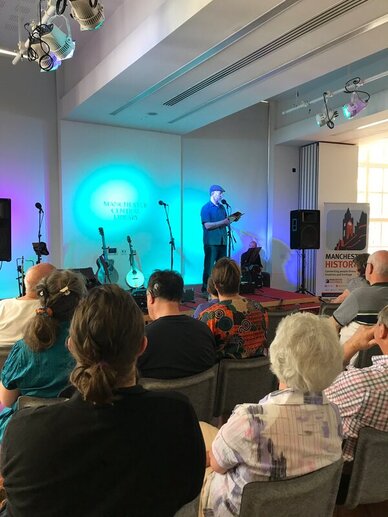 Manchester Central Library 2019 when G J Griffiths read the chapter shown here. He shared the stage with Trebuchet a local folk group who sang ballads of the time of the Peterloo Massacre 1819.
Manchester Central Library 2019 when G J Griffiths read the chapter shown here. He shared the stage with Trebuchet a local folk group who sang ballads of the time of the Peterloo Massacre 1819.
peterloo1819.co.uk/event/peterloo-to-read-to-hear-to-feel/A Chapter from Mules; Masters & Mud as a "taster"
An extract from Mules; Masters & Mud - the sequel to The Quarry Bank Runaways.
An extract from Mules; Masters & Mud - the sequel to The Quarry Bank Runaways.
- It is from the chapter about the runaway apprentice Thomas Priestley when, as an adult, he is wounded while attending what became known as the Peterloo Massacre.
On a fine sunny morning in August 1819 Thomas, with eight other cotton workers, was travelling on a horse drawn cart to Manchester. The road from Mellor was not one of the best in wet weather, but the rain had stopped as they joined the turnpike road, passing through Stockport, to pick up Tommy and some other club members, when everyone was in high spirits. They were all looking forward to hearing Henry Hunt speak to an assembly of people on Parliamentary reform and against the Corn Laws, for which the high price of food was being blamed. The many peaceable workers, like Thomas, had high hopes for a non-violent orator like Hunt to bring to the attention of the government the claims of “ordinary folk” of the causes for the many hardships in their lives. It was rumoured that hundreds would be there in St. Peter’s Fields and that it would remain peaceful enough for women and children to be present.
‘Wotcher, Tommy, ’ow’s things?’
‘Pretty fair, Jacob, pretty fair... What’s that clothes prop for, then? It looks like a flag.’
‘Clothes prop? Nay, mate that’s me banner demandin’ the vote, ain’t it.’
Jacob was a secret convener of club meetings and groups for the surrounding mills of Stockport. He had become quite a confidante of Thomas and Will Souter and kept them informed as much as he could about changes in employment law and other developments. He had listened to Francis Place speak against the Combinations Acts and had joined the march two years earlier when the workers had hoped to present a petition to the Prince Regent in London. The large group of protesters had walked but a few miles south of Manchester when troops had broken it up, causing more dissidence to spread to many more workers.
There were eight leather flagons on the cart with contents that added much to the holiday mood amongst the men aboard. As soon as the scrumpy cider had all disappeared everyone was agreed the ale would be most welcome. Even with an early morning start to the journey the cart was not going to reach Manchester much before lunchtime. Frequent stops for the relief of eight bladders had a lot to do with the delays and word had reached the pie-men and other purveyors of food about the meeting on St. Peter’s Fields. The suppliers of such refreshments were scattered along the route every half mile or so and they were doing well. The cart from Mellor found it was one of very many by the time they reached Ancoats. Most of the men on the cart had never been to Manchester and while they were most impressed by the many enormous mills that towered above them, they were alarmed to see how densely populated the area was. Dozens of people walked to and fro while small gangs of small children played in the filth.
‘Where do all these people live?’ asked Thomas.
‘Why in these tenements an’ back-to-back houses, Tommy. Oh, an’ though they’ve got better roads around ’ere it’s for the convenience o’ the mill owners an’ merchants, see: for the transport o’ bales an’ what ’ave thee.’
‘Look at the state o’ the roads,’ said Tommy.
There were piles of discarded bits of broken furniture, rotting vegetables, filthy soiled clothing and stinking excrement littering the sides of a yellow stream. The yellow stream was an open running sewer that would eventually find its way into the Rochdale Canal or either of the rivers Mersey or Irwell.
‘Aye, an’ ’alf these ’omes ’ave got no privies or plumbin’, pal,’ said Will. ‘No surprise, there’s so many poor kiddies dead afore they’re ten around the town, eh,’ he continued. ‘Thee can nigh see th’ miasma that’s acomin’ up off them streets; causin’ all sorts o’ diseases, see.’
The wagoner driving the cart was attempting to find a way through Redhill Street and as they passed by the enormous eight storey edifice that was McConnel’s Mills he told Jacob that he was about to stop.
‘See, Jacob, ah needs ter find a farriers ter attend to me hoss… Mebee, a stable somewhere round ’ere, if ah can… Hoss is trottin’ a bit lame, see.’
‘No problem, mate,’ replied Jacob. ‘It ain’t that far ter walk from here… Ah knows the right road. We go past th’ Infirmary on Piccadilly?’
The wagoner nodded and the workers got down from the cart, still in high spirits, chatting about the high hopes they had about Orator Hunt and what they expected to hear in his speech. There were no open public spaces neighbouring the many mills; no parks for the group to stroll through or sit and chat; no public buildings nor churches with churchyards. Everything about the place where they had stopped was about cotton: scotching it; carding it; spinning it; weaving it and selling it. They were in the growing heart of Cottonopolis.
The group from Mellor and Stockport were amazed to see dozens of wagons and carts lined up around the streets bordering St. Peter’s Fields. But the sheer numbers of happy people, men, women and children, congregating upon the site meant for the speeches was a shock – there were many, many thousands and they all seemed to be in the same holiday mood as all of the club members. There were sideshows, entertainers of all kinds, pedlars and stalls with refreshments; the carnival atmosphere belying the serious nature of the reasons for such an assembly of thousands from the working classes of the north of England. Henry Hunt’s reputation as a radical reformer had reached the local magistrates and they had called upon the Yeomanry of Manchester and Cheshire to stand by in case of insurrection from the crowds. A narrow passage, lined by constables, allowed Hunt and others to approach the raised platform amidst the packed assembly and the suffocating heat of the middle of the August day. Watching from his room at the corner of St. Peter’s Field the chairman of the magistrates was encouraged by Hunt’s enthusiastic reception to issue warrants for the arrest of the speakers and send orders for dispersal of the assembly. He feared for the preservation of the peace, ensuing riots and, therefore, that lives and property were in danger; not only that but he assumed what he saw was but a part of a nationwide rebellious movement.
The speeches began; banners were waved; repeal of the Corn Laws was demanded; shouts and cheers followed; universal suffrage was reasonably demanded; more cheers and cries of: ‘Hear, hear! Well said, sir! Hurrah, that’s right!’ could be heard above the holiday hum of the crowd. Up on their platform Hunt and his entourage were growing ever more animated and arms were raised, waved in the way of many a country church choir master. The people, many still dressed in their plain working clothes, were unaffected by the contrast with the fine apparel worn by the lecturers. Ordinary people were whooping and applauding with such exuberance that they could be heard miles away. The swelling sound was now about to be misinterpreted by the Yeomanry, strategically assembled to the west and east of St. Peter’s Fields, supported by hundreds of constables and a company of hussars. The poorly trained, volunteer cavalrymen of the Yeomanry were commanded by Captain Birley, who was also a local factory owner.
It was not ten minutes after one thirty when the captain led his cavalry towards the platform of speakers. This was to assist the chief of constables and his men in the arrest of those same speakers. In attempting to force their way through, the horsemen lost all sense of self-control and drew their sabres, hacking their way through everyone in their path, men, women and children! In the panic of people trying to get out of the way the untrained horses reared and plunged into them, injuring many more. When the arrest warrant had been served by the police officer, the Yeomanry then set about seizing and destroying the many flags and banners, and to disperse the crowd further. But this was not possible while the main exit from the area was blocked by rows of foot soldiers with fixed bayonets.
Thomas and Jacob became incensed at the sight of a large group of flag-carrying women from a female reform society, all dressed in white, who were being savagely attacked by horsemen. More spilt blood conflicted horribly with the white dresses of the women and a few brave souls attempted to defend themselves with their short flag staffs. With eyes as wild as those of their steeds the cavalrymen slashed out, not caring whether the flags parried their deadly sabres or whose head was split open.
‘Come on, Jacob!’ yelled Thomas as he flung himself forward at one of the horsemen and held on to his weapon arm. The man would not be pulled down from the saddle and received a hefty blow to his back from Jacob’s banner pole. This was then a signal to the soldier’s comrades to turn their attention to the two men and rain blows upon them. Thomas and Jacob were not alone in attempting to return the fight physically, while the many brickbats and loud curses from the people heard by the magistrates caused them to rouse the hussars into the fray.
‘The crowd must be dispersed! The yeomanry are now being assaulted! Go to it!’ they ordered the officer commanding the hussars. Within ten, or maybe, fifteen minutes the assembly in St. Peter’s Fields had been dispersed, although riots continued throughout the streets of Manchester for hours. Bloodied and injured bodies in their hundreds strewed the area and later it was found that there were eleven fatalities among them, including nine men and two women. Thomas and Jacob, with three of the women reformers, lay unconscious where they fell. They were surrounded by others, similarly wounded and bleeding, unable to hear the groans and cries of pain that arose like an invisible cloud of doom over the field.
The majority of the ruling classes did not save their blame and recriminations just for those working class people who were able to walk away from St. Peter’s Fields free of injury. Many of the wounded did not seek medical treatment for they were certain that it would invite retribution from the authorities. Rumours of such a spiteful attitude had a strong basis in fact. The mill owner who had captained the unruly yeomanry, one Hugh Birley, was greatly offended when he discovered that one of his male workers had dared to attend the meeting in St. Peter’s. His hurt and annoyed feelings were somewhat appeased, however, when he subsequently sacked the three sons of the man later. The surgeon in the Infirmary who was attending to the wounds of some of the workers brought there had definite views about the ‘upstarts’ from the lower classes learning a suitable lesson as a penalty for their ‘crimes’. Unfortunately, Thomas and Jacob were two of those on the receiving end of the surgeon’s disciplinary measures as they lay awaiting treatment.
‘The sabre wounds to your heads are going to need sponge cleaning and packing, gentlemen. The redness and pus that is forming indicates to me that wound fever has begun, but of course that is quite normal where sepsis is concerned. Are you in pain?’
Both men had not ceased groaning since they had recovered consciousness and the red swelling around the cuts was considered by the surgeon to be a sign of healing, rather than one of serious infection. Their bodies and limbs were covered in bruises and this was considered to be of very little concern. Jacob’s cuts to his crown and ear were deeper than those to Tommy’s head and arm and causing him considerable pain.
‘Will thou see ter me companion first of all, sir? I think he’s a sufferin’ most,’ said Thomas.
The surgeon drew closer with his bowl of vinegar water and the same cloth that he had been using all afternoon.
‘I expect you two foolish fellows will be returning to work peacefully quite soon. No doubt you’ll agree that you’ve had your fill of these ill-advised Manchester meetings.’
Despite the pain and the temptation to swoon again into a state of unconsciousness Thomas and Jacob shook their heads, just a little, as much as the soreness would allow.
‘Oh, no, sir; our cause is just. We mun stick together an’ demand the vote an’ better workin’ conditions,’ answered Jacob.
‘While them laws as keeps the price o’ bread up too ’igh is there we gotter keep goin’, sir. Folks is starving’ while wages is pressed down by factory owners,’ added Thomas... (to be continued...)
REVIEW QUOTE: "I read this book as a sequel to the Quarry Bank runaways. Many speculate on the answer to the question” what happened to the boys?” G J Griffiths offers some answers In a fictional sense. No less credible this historical fictional book relys on the authors encyclopaedic knowledge of Quarry Bank Mill and blends in a good understanding of the conventions of the times. His graphic description of the Peterloo Massacre is well researched and timely, given the bi centenary commemoration in 2019, and redolent of the spirit of the times. He also explores various occupations of the folk of the early 19th century and his portrayal of life in service is incisive and perfectly captures the stratified tiers of society at the times. Much has been said about the use of dialect in the book. I had no need of the glossary helpfully provided at the end of the book and applaud the author in writing in his singular fashion in a way that reflects the speech of these ancient people of which a modern version is still spoken today . Without giving away the ending I ll just say that the author concludes with a heart rending description of family life in a semi rural community and leave the reader feeling suitably rewarded for reading it. If you want to understand why Peterloo took place read this book."
CONTACT 2
CONTACT 2
